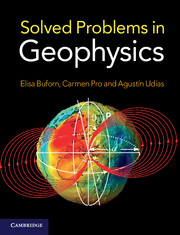Preface
Published online by Cambridge University Press: 05 June 2012
Summary
Preface
This book presents a collection of 197 solved problems in geophysics. Our teaching experience has shown us that there was a need for a work of this kind. Solving problems is an indispensable exercise for understanding the theory contained in the various branches of geophysics. Without this exercise, the student often finds it hard to understand and relate the theoretical concepts with their application to practical cases. Although most teachers present exercises and problems for their students during the course, the hours allotted to the subject significantly limit how many exercises can be worked through in class. Although the students may try to solve other problems outside of class time, if there are no solutions available this significantly reduces the effectiveness of this type of study. It helps, therefore, both for the student and for the teacher who is explaining the subject if they have problems whose solutions are given and whose steps can be followed in detail. Some geophysics textbooks, for example, F.D. Stacey, Physics of the Earth; G.D. Garland, Introduction to Geophysics; C.M. Fowler, The Solid Earth: An Introduction to Global Geophysics; and W. Lowrie, Fundamentals of Geophysics, contain example problems, and, in the case of Stacey's, Fowler's, and Lowrie's textbooks, their solutions are provided on the website of Cambridge University Press. The main difference in the present text is the type of problems and the detail with which the solutions are given, and in the much greater number.
All the problems proposed in the book are solved in detail, showing each step of their solution, the equations used, and the assumptions made, so that their solution can be followed without consulting any other book. When necessary, and indeed quite often, we also include figures that allow the problems to be more clearly understood. For a given topic, there are problems with different degrees of difficulty, from simple exercises that can be used in the most elementary courses, to more complex problems with greater difficulty and more suitable for teaching at a more advanced level.
- Type
- Chapter
- Information
- Solved Problems in Geophysics , pp. vii - xPublisher: Cambridge University PressPrint publication year: 2012



